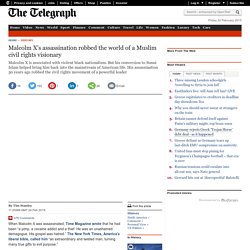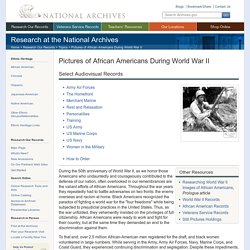

Malcolm X's assassination robbed the world of a Muslim civil rights visionary. If Malcolm was angry, he had good cause.

He was born in 1925 into a society wherein he felt that black people had no personhood: brought to America by theft, owned, freed with a fight, condemned to poverty and racism. The United States preferred its “good” black men to be victims, martyrs or Christian visionaries. But Malcolm grew up in a household where the words of black nationalist Marcus Garvey were gospel, and he wandered the streets of a New York where jazz gave African-Americans their own language and identity. He father was killed in mysterious circumstances, his mother went insane. A white teacher, he claimed, told him that his ambition to be a lawyer was “no realistic goal for a n–––––.” The Nation has a reputation for hate. We might regard this dogma as contrary to traditional religious emphasis upon the common origin of man, but to someone with Malcolm’s history it contained a certain logic.
Thomas Hagan struggles with police after assassinating Malcolm X (AP) Pictures of African Americans During World War II. During the 50th anniversary of World War II, as we honor those Americans who undauntedly and courageously contributed to the defense of our nation, often overlooked in our remembrances are the valiant efforts of African Americans.

Throughout the war years they repeatedly had to battle adversaries on two fronts: the enemy overseas and racism at home. Black Americans recognized the paradox of fighting a world war for the "four freedoms" while being subjected to prejudicial practices in the United States. Thus, as the war unfolded, they vehemently insisted on the privileges of full citizenship. African Americans were ready to work and fight for their country, but at the same time they demanded an end to the discrimination against them. To that end, over 2.5 million African-American men registered for the draft, and black women volunteered in large numbers. On the homefront, black Americans also did their part to support the war. US Army 1. 2. African American World . Timeline. THE WAR . For Educators . Lesson Plan.
These lesson plans have been developed to help teachers bring Ken Burns’s THE WAR into the classroom.

Classroom activities are appropriate for students in grades 9-12 and cover major themes addressed in the film. Many of the lessons also incorporate video clips from the film and other resources found on this site. Double V (PDF) » Subjects: American History, Media Literacy, Civics, Language Arts Grade level: 9 - 12 During World War II African Americans found themselves with conflicting feelings about supporting the war effort when their own country did not offer them the freedom America was fighting for overseas.
In this lesson students wage their own Double V campaign in their classroom and/or school through writing news articles, mounting photographic exhibits, producing radio programs and generating banners, slogans and songs. Video clips incorporated into this lesson: The War Through the Eyes of Al McIntosh (PDF) » Subjects: U.S. While big-name journalists like Edward R. Just War (PDF) » 0808001v.jpg (JPEG Image, 2547 × 1821 pixels) - Scaled (40%) African American Odyssey: The Depression, The New Deal, and World War II (Part 1) The stock market crash of 1929 caused soup lines to become the order of the day for the skilled and unskilled alike in urban areas across the nation.

African Americans in both cities and rural areas, many already living in poverty, suffered greatly from the economic depression. When Franklin Delano Roosevelt was elected in 1932, he promised a "new deal" for all Americans that would provide them with security from "the cradle to the grave. " Although there were many inequities in the New Deal housing, agricultural and economic programs, blacks had opportunities to obtain employment, some in areas previously closed to them.
Black writers, for example, participated in the New Deal's writing projects, while other black Americans interviewed former slaves for the Works Project Administration (WPA). These New Deal programs generated numerous documents that found their way to the Library's collections. 0819001r.jpg (JPEG Image, 600 × 841 pixels)